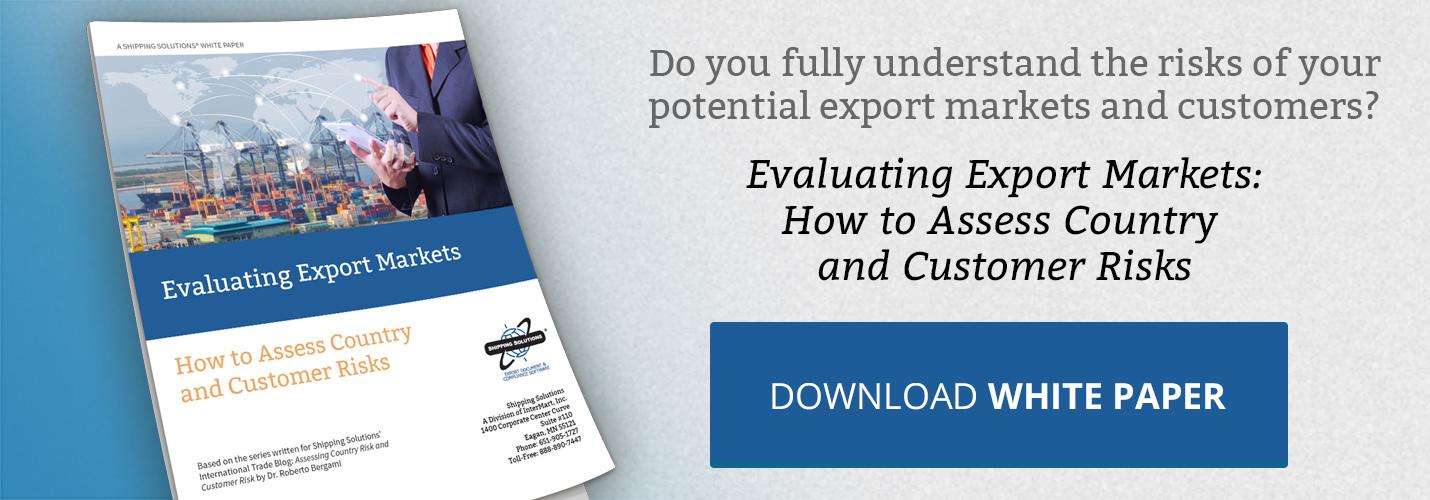The International Trade Blog International Sales & Marketing
Finding a Bank for a Back-to-Back Letter of Credit May Be Difficult
On: October 26, 2015 | By:  Chris Lidberg |
2 min. read
Chris Lidberg |
2 min. read

If you ever want to send a chill down the spine of your banker in the United States, just mention the phrase “back-to-back letters of credit.”
Back-to-Back Letter of Credit
In a typical letter of credit (LC) arrangement, the buyer instructs their bank to issue an LC to the seller. There may be times, however, when a broker is acting as a buying or selling agent or middleman on behalf of the buyer or the seller. In this case, the broker may not want one of the parties to know that the other exists in order to protect their place in any future transactions between the two parties.
Therefore, the buyer instructs their bank to issue an LC to the broker. The broker then must be able to provide an LC to the seller. In order to do this, the broker wants the bank to accept the letter of credit provided by the buyer as collateral to enable them to issue a second letter of credit to the seller. The broker will argue that the proceeds from the first letter of credit can be used to fund the second letter of credit that the broker is trying to get issued.
Most banks in the U.S. will refuse to issue an LC under these circumstances for a number of reasons. First, most banks require that the applicant—in this case the broker—have a line of credit in place. Holding a letter of credit to be used as collateral probably wouldn’t be enough. The bank is going to want to see more, such as a current balance sheet, a record of earnings for three or more years, cash flow projections, a business plan, and a credit rating. The list could go on and on.
Second, the bank won’t want to rely on another LC as their source of funding. The risk is just too high. When documents are presented against the LC that the buyer applied for, discrepancies could very likely be found. Once a discrepancy is found, there is a chance that payment could be refused. If this happens and then compliant documents are presented against the second LC that the broker wants issued, the bank is now in a position where they must make payment, but they don’t have a source for funding that payment. Banks don’t like to find themselves in a position like this.
Third, timing could be an issue. It’s very likely that the seller would present documents against the LC that the broker is trying to get issued before documents are presented against the LC that the buyer issued. Using the one LC as a source of funding for the other could definitely require some type of interim financing, which takes us back to the line of credit issue.
Of course the best course of action is to check with your bank to find out what their policy is regarding back-to-back letters of credit. Just don’t be surprised if they don’t have an appetite for the business.
You'll find possible alternatives to a back-to-back letter of credit in my article, Two Alternatives to a Back-to-Back Letter of Credit.
This article was first published in May 2005, and has been updated to include current information and formatting.

About the Author: Chris Lidberg
Ms. Chris Lidberg was an independent consultant in the area of international banking and Letters of Credit. Ms. Lidberg had more than 25 years of international banking experience, most recently as Vice President at U.S. Bank where she was part of the International Trade Services Division. She was responsible for selling the bank's international products to both customers and prospects, and conducting Letter of Credit seminars.
During her 25 years in banking, 15 of those years were spent in the Letter of Credit area, holding various supervisory positions, later to manage the Letter of Credit department. MS. Lidberg went on to become the manager of International Operations where she was responsible for managing not only Letters of Credit, but also International Collections, Money Transfers, Cash Letters, Investigations and all Telex and SWIFT activities for the bank.



